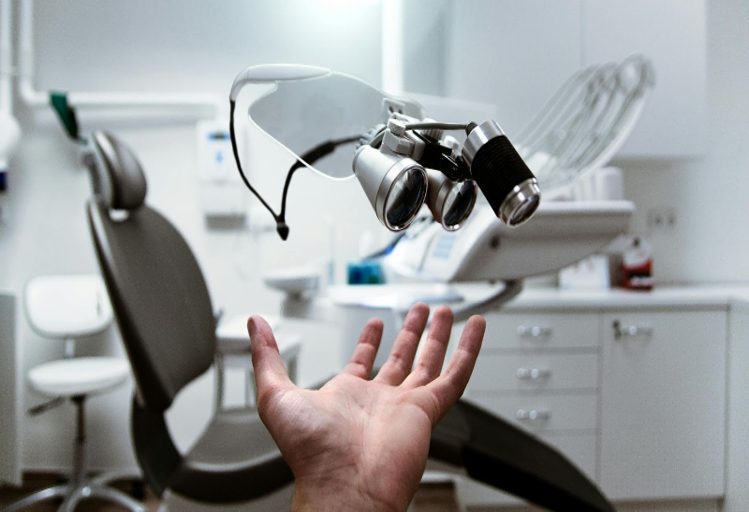
@ShahidNShah


Emergency eye care is critical in preserving vision in various situations. Eye injuries from accidents, chemical exposures, and sudden vision changes demand immediate attention. Foreign objects, severe eye pain, and unexpected flashing lights or floaters indicate potential underlying conditions requiring urgent evaluation. Additionally, sudden redness, swelling, discharge, bleeding, and contact lens complications necessitate prompt eye care emergencies in Mandan evaluation. Understanding these scenarios is essential for timely action and ideal visual outcomes.
Eye injuries resulting from accidents present a significant concern in emergency eye care, as they can range from minor abrasions to severe trauma that may lead to vision loss. Falling debris is a prevalent cause, especially in construction sites or during natural disasters, where unprotected eyes are vulnerable to blunt or penetrating trauma. Sports-related injuries are another major contributor, commonly observed in activities such as basketball, baseball, and racquet sports. These incidents often result in corneal abrasions, orbital fractures, or even retinal detachment. Immediate assessment by an ophthalmologist is essential to evaluate the extent of damage and initiate appropriate interventions. Protective eyewear is strongly recommended to mitigate the risk of such injuries, emphasizing the importance of preventive strategies in safeguarding vision.
Beyond physical trauma, exposure to chemicals poses a significant risk to ocular health, demanding immediate and precise intervention. Chemical agents, whether alkaline or acidic, can cause corneal damage, conjunctivitis, or even vision loss. Proper handling techniques and adherence to safe cleaning practices are essential in mitigating such risks. In the event of chemical exposure, the affected individual should initiate ocular irrigation with copious amounts of sterile saline or clean water, ideally within seconds of exposure, to dilute and remove the offending substance. Protective eyewear and gloves should be used during activities involving hazardous chemicals. Immediate consultation with an ophthalmologist is recommended to assess the extent of injury and to administer appropriate treatment, such as topical antibiotics or corticosteroids, if necessary.
Although sudden vision changes can be alarming, they often serve as critical indicators of underlying ocular or systemic conditions requiring prompt evaluation. Such changes may manifest as blurry vision or temporary blindness and should never be disregarded. Immediate medical assessment is essential to determine the etiology and to initiate appropriate management. Potential causes include:
Recognizing these symptoms early and seeking timely intervention can markedly improve visual prognosis and prevent potential complications.
Encountering foreign objects in the eye is a frequent ocular emergency that warrants immediate attention to prevent potential damage to the delicate structures of the eye. Such intrusions can lead to corneal abrasions, which are superficial scratches on the cornea, compromising its integrity and function. Immediate identification and removal of the offending object are essential to mitigate further complications. Symptoms commonly include eye irritation, redness, tearing, and a sensation of something being lodged within the eye. It is critical for individuals to seek prompt ophthalmic evaluation to assess the extent of injury and implement appropriate management. Avoid rubbing the eye, as this may exacerbate corneal abrasions. Eye care professionals may utilize saline irrigation or sterile instruments to safely extract the foreign material.
Foreign objects in the eye are not the only cause of ocular distress that demands immediate attention. Severe eye pain can arise from a range of conditions, each necessitating prompt evaluation by an eye care professional. Potential causes include:
Immediate assessment and treatment are essential to prevent potential vision loss.
Patients frequently report the sudden appearance of flashing lights and floaters, symptoms that warrant careful evaluation due to their potential association with retinal issues. These visual phenomena, particularly the sudden onset of floaters and increased frequency of flashes, may indicate posterior vitreous detachment or retinal tears. The presence of these symptoms necessitates prompt ophthalmologic assessment to rule out retinal detachment, a condition where the retina separates from its supportive tissue, risking vision loss. Clinicians employ dilated fundoscopic examination to detect any retinal abnormalities. Immediate identification and intervention are essential to preserve visual function. Patient education should emphasize the importance of seeking urgent care when experiencing these symptoms, as early detection substantially improves treatment outcomes and prevents complications.
The sudden onset of red or swollen eyes can be attributed to various etiologies ranging from allergic reactions to infectious processes such as conjunctivitis or uveitis. Clinicians should be attentive to accompanying symptoms like pain, which may indicate more serious conditions such as acute glaucoma or orbital cellulitis. Prompt evaluation and intervention are vital to prevent potential vision impairment or more severe complications.
Although eye redness can be alarming, it often results from a variety of benign causes. Understanding these causes aids in determining the need for emergency eye care. Allergic reactions are a prevalent cause, resulting from exposure to pollen, dust, or pet dander, leading to conjunctival inflammation. Dry eye syndrome arises from insufficient tear production or excessive tear evaporation, contributing to redness due to ocular surface irritation. Other common causes include:
Prompt assessment is essential to rule out more serious conditions.
Redness in the eyes, while often benign, can sometimes be accompanied by sudden swelling and pain, signaling a more urgent medical issue. Such symptoms may indicate underlying conditions like acute conjunctivitis, uveitis, or even an ocular infection. Clinicians must assess eye strain indicators, which could exacerbate symptoms, as well as increased tear production, which may signify a reflexive response to irritation or infection. Prompt evaluation is indispensable, as these signs can also herald more severe complications, such as corneal ulcers or scleritis. Patients are advised to seek immediate professional care, especially when these symptoms are sudden and persistent. Accurate diagnosis and timely intervention are essential to prevent potential vision impairment and to manage the underlying causes effectively.
When experiencing eye discharge or bleeding, it is crucial to understand the underlying causes and appropriate interventions. These symptoms can indicate various ocular conditions, necessitating prompt medical evaluation. Discharge may be associated with infections, allergies, or trauma, often accompanied by excess tearing and puffy eyelids. Bleeding, although less common, requires urgent attention to prevent further complications.
Common underlying causes include:
Clinical assessment is imperative to determine the precise cause and appropriate treatment pathway.
Contact lens complications can manifest as lens displacement issues or increased infection risk, both requiring immediate attention in emergency eye care. Displacement may lead to corneal abrasion or discomfort, necessitating careful repositioning or removal by a healthcare professional. Infection risk factors include poor hygiene practices and extended wear, emphasizing the importance of strict adherence to cleaning protocols and recommended usage durations.
For individuals utilizing contact lenses, lens displacement is a common complication that can lead to significant ocular discomfort and potential damage if not promptly addressed. Lens misalignment and lens dislocation are frequent occurrences that necessitate immediate attention. Symptoms may include blurred vision, redness, irritation, and excessive tearing. Corrective measures are essential to prevent corneal abrasions and other serious complications.
Key considerations for managing lens displacement include:
Prompt intervention guarantees optimal eye health and prevents long-term damage.
Addressing lens displacement effectively mitigates immediate discomfort, yet another significant concern for contact lens users is the risk of infection. Bacterial, fungal, and viral pathogens can infiltrate the ocular surface, leading to conditions such as keratitis. High risk activities, such as swimming or sleeping with contact lenses, increase exposure to harmful microorganisms. Additionally, individuals with a weakened immune system are at a higher susceptibility for infections due to compromised ocular defenses. Proper lens hygiene, including regular cleaning and timely replacement, is essential in reducing infection risk. Patients are advised to avoid water exposure and make certain hands are thoroughly cleansed before handling lenses. Prompt recognition of symptoms like redness, pain, or visual disturbance warrants immediate consultation with an ophthalmologist to prevent severe complications.
Proper lighting techniques and engaging in safe home activities are essential to prevent eye emergencies at home. Maintaining sufficient light during tasks and avoiding hazardous activities without protective eyewear mitigates risks to ocular health.
Yes, specific foods such as antioxidant-rich foods and vitamin C-containing produce can improve eye health. Consuming fruits like oranges and vegetables such as spinach enhances ocular function and may reduce the risk of certain eye diseases.
Individuals should schedule annual checkups for thorough eye exams to monitor ocular health, detect vision changes, and identify potential disorders. Regular evaluations are essential for maintaining ideal visual acuity and preventing progressive eye conditions.
Symptoms of eye infections include increased tearing, redness, and sensitivity to light. These clinical signs necessitate prompt evaluation by an eye care professional to prevent complications and guarantee appropriate treatment, safeguarding ocular health and preventing vision impairment.
Prolonged screen time contributes to computer vision syndrome, characterized by eye strain, dryness, and discomfort. Screen brightness adjustment is essential for reducing glare and minimizing symptoms, promoting ocular health through frequent breaks and maintaining appropriate viewing distances.

Back pain, poor posture, and daily stress have become part of modern life. Many people turn to quick fixes like painkillers or temporary therapies, but these options rarely solve the underlying issue. …
Posted Sep 25, 2025 Care Management
Connecting innovation decision makers to authoritative information, institutions, people and insights.
Medigy accurately delivers healthcare and technology information, news and insight from around the world.
Medigy surfaces the world's best crowdsourced health tech offerings with social interactions and peer reviews.
© 2025 Netspective Foundation, Inc. All Rights Reserved.
Built on Dec 9, 2025 at 7:47am